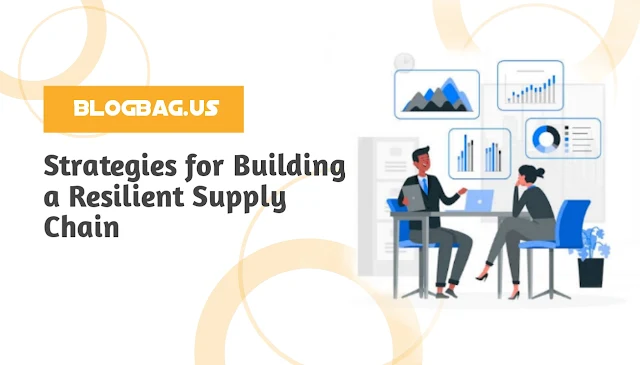Strategies for Building a Resilient Supply Chain
In today's dynamic business landscape, a resilient supply chain is crucial for maintaining a competitive edge and ensuring business continuity. Disruptions, whether caused by natural disasters, global crises, or logistical challenges, can have a significant impact on your supply chain. To mitigate these risks and enhance your supply chain's resilience, consider implementing the following strategies:
1. Diversify Your Supplier Base
Overreliance on a single supplier can be risky. Explore partnerships with multiple suppliers, especially those located in different geographic regions. This diversification can help you navigate supply chain disruptions more effectively.
2. Develop Risk Management Strategies
Identify potential risks to your supply chain, both internal and external. Create a comprehensive risk management strategy that includes risk assessment, monitoring, and mitigation plans. Being prepared for various scenarios is key to resilience.
3. Embrace Technology and Automation
Implementing technology-driven solutions, such as data analytics, Internet of Things (IoT) sensors, and automation, can provide real-time visibility into your supply chain. This enhanced visibility allows for better decision-making and risk management.
4. Collaborate with Suppliers
Establish strong relationships with your suppliers. Collaboration can lead to open communication, shared risk management, and the ability to respond quickly to disruptions. Work together to create contingency plans.
5. Demand Forecasting and Inventory Management
Accurate demand forecasting and efficient inventory management are essential. Excess inventory can strain your finances, while insufficient stock can disrupt your operations. Leverage forecasting tools and adopt just-in-time inventory practices.
6. Supply Chain Visibility
Enhance transparency within your supply chain. Leverage digital tools and platforms that offer end-to-end visibility, enabling you to track products and materials from suppliers to end-users. This visibility can aid in early issue detection.
7. Supplier Audits and Assessments
Regularly audit and assess your suppliers. Ensure they meet quality and compliance standards. Identifying potential issues in advance can help prevent supply chain disruptions.
8. Crisis Management Plan
Develop a comprehensive crisis management plan that outlines steps to take in the event of a disruption. Include communication protocols, roles and responsibilities, and strategies for alternative sourcing.
9. Sustainable Practices
Consider sustainability in your supply chain strategies. Sustainable practices can reduce risks, enhance your brand's reputation, and contribute to long-term resilience.
10. Continuous Improvement
Regularly evaluate and refine your supply chain strategies. Learn from past disruptions and adapt to changing conditions. Continuous improvement is key to maintaining resilience.
By implementing these strategies, you can build a resilient supply chain that can withstand challenges and disruptions. Remember that resilience is an ongoing process that requires dedication and adaptability.


Post a Comment for "Strategies for Building a Resilient Supply Chain"